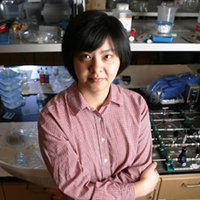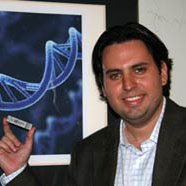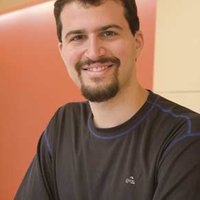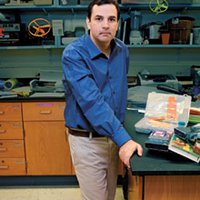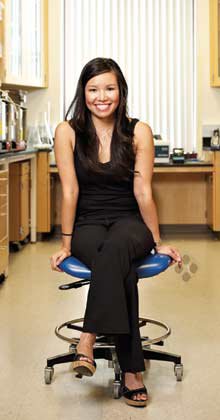In 2006, Michelle Khine arrived at the University of California's brand-new Merced campus eager to establish her first lab. She was experimenting with tiny liquid-filled channels in hopes of devising chip-based diagnostic tests, a discipline called microfluidics. The trouble was, the specialized equipment that she previously used to make microfluidic chips cost more than $100,000--money that wasn't immediately available. "I'm a very impatient person," says Khine, now an assistant professor at the University of California, Irvine. "I wanted to figure out how I could set things up really quickly."
Racking her brain for a quick-and-dirty way to make microfluidic devices, Khine remembered her favorite childhood toy: Shrinky Dinks, large sheets of thin plastic that can be colored with paint or ink and then shrunk in a hot oven. "I thought if I could print out the [designs] at a certain resolution and then make them shrink, I could make channels the right size for microfluidics," she says.
To test her idea, she whipped up a channel design in AutoCAD, printed it out on Shrinky Dink material using a laser printer, and stuck the result in a toaster oven. As the plastic shrank, the ink particles on its surface clumped together, forming tiny ridges. That was exactly the effect Khine wanted. When she poured a flexible polymer known as PDMS onto the surface of the cooled Shrinky Dink, the ink ridges created tiny channels in the surface of the polymer as it hardened. She pulled the PDMS away from the Shrinky Dink mold, and voilà: a finished microfluidic device that cost less than a fast-food meal.
Khine began using the chips in her experiments, but she didn't view her toaster-oven hack as a breakthrough right away. "I thought it would be something to hold me over until we got the proper equipment in place," she says. But when she published a short paper about her technique, she was floored by the response she got from scientists all over the world. "I had no idea people were going to be so interested," Khine says.
At the same time, she faced considerable skepticism. How on earth, critics wondered, could you use a toy to make a sophisticated device that's normally forged from high-grade silicon? "People either love it or they laugh at me," Khine says. She hastens to point out that Shrinky Dink microfluidics isn't perfect--minute ink splatters from the printer, for instance, can give rise to slight irregularities in the finished channels.
Still, glitches like these don't pose a problem for most applications. And Khine has already found a way around a more serious difficulty: PDMS can absorb proteins, throwing off the results of sensitive tests. She has begun to make chips directly out of the Shrinky Dinks by etching the design into the plastic using syringe tips. As the plastic shrinks, the channels become narrower and deeper--perfect for microfluidics. She can even make three-dimensional chips by melting several etched Shrinky Dinks together. The whole process, from design to finished chip, takes only minutes.
Khine plans to use her chips to detect various medical conditions, and she hopes the cheap and portable devices will someday be used to diagnose HIV and other infections at the bedside. She has also found that by growing stem cells in a Shrinky Dink device that contains wells instead of channels, she can coax them to become heart muscle cells. Such a tool might allow researchers trying to grow those cells for tissue transplants to control the process more closely.
Douglas Crawford, associate executive director of the California Institute for Quantitative Biosciences, sees advantages in Khine's approach. "Michelle's technique is better, faster, and cheaper--it can put microfluidic prototyping into the hands of every lab," he says.
Khine recently printed metal patterns on Shrinky Dinks. As the plastic shrinks, the metal buckles to form shallow wells, which Khine thinks may concentrate sunlight; the discovery could help make solar cells more efficient. "We haven't come close to pushing the limits of this technology yet," she says. --Elizabeth Svoboda
